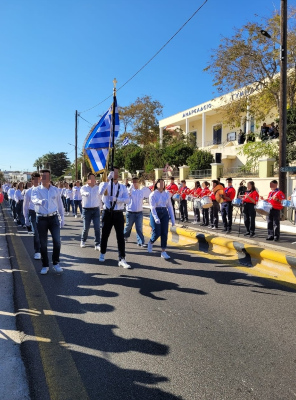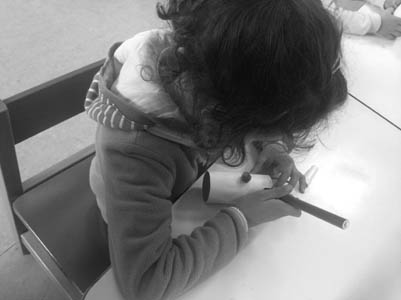In honor of Chios’ independence day on November 11th, the kindergarten where I volunteer has planned a special excursion for the children. As an ESC volunteer and assistant teacher, I get to know the history and culture of Chios together with the children, this is, among other things, my favorite part of it all.
We spent the last day before the extended weekend in Chios city exploring the castle and the surrounding area. A really exciting trip for everyone.
The next day was also very eventful: on November 11th, a large celebration took place on the island. It is the day of Chios’ liberation and the day Chios was finally reunited with Greece. We also learned a lot about that in kindergarten, and I would like to share a little bit about Chian history with you, along with my impressions of the celebrations and the excursion.
Together with all the children and teachers of the kindergarten, I took the bus to Chios town. Everyone was really stressed at first. Are all the children there? Did everyone pay for their bus ticket? Did we bring everything we need? But as soon as the children could see the castle through the windows, which they have learned a lot about during the last few days, excitement filled the air, and all the teachers could relax a little bit too. Two by two, we walked to our first stop: the central gate.

You will notice that the castle of Chios contains a lot of different elements that trace back to different chapters of the island’s history. A lot of the many occupiers of Chios Island made a dent here. Initially, the first architectural phase of the monument was built at the end of the 10th century, but almost nothing has survived from that construction. Likewise, the Central Gate. It was reconstructed by the Venetians in 1694.
After a quick group picture, we continued by visiting the Dark Prison (Σκοτεινή Φυλακή). In 1822, 74 notables of Chios were imprisoned here by the Turks. A really dark place with high stone walls. The children were quickly distracted by a cat walking around, but it is still impressive to see this place and imagine its importance in former times.
We continued to look at an Turkish graveyard after a dance game on the main square inside the castle walls (which, by the way, is a great place to go out for dinner and enjoy the Greek cuisine). Another memorial of former times is a reminder of the Turkish occupation, which is a big part of the Chian history.
Along the central road of the castle stands the church of Saint George. Walking past some restaurants and charming little streets, we found ourselves in the beautiful backyard of the church. There was originally a Byzantine church dating back to the 10th or 11th century. It later became a Genoese one. We played a puzzle game that eventually revealed a map of the entire castle.
It is situated near the port of Chios, and its east side borders the sea. When you walk up on the seaside wall, you have a wonderful view over the coast of Chios. The large stone wall surrounding the castle was originally built to defend the enclosed population against naval attack and siege.
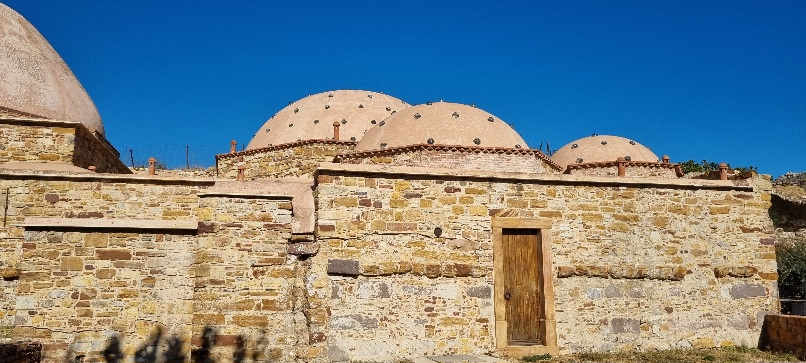
In the north of the castle area, there are the Turkish baths. The typical vaulted roofs give it a special flair. We could even go into the bath and see the sun shining through it. The Kria Vrisi tank is on the right just after entering. It is a semi-underground water reservoir from which the Turks drew their water.
It was a long day for the children, but everyone seemed to have a great time. With all the teachers, we were able to look after them and be there for them if they needed something. We all made it back to the bus safely, and when I heard quite snoring from a seat behind me, I knew it had been a successful day. All of the new impressions and knowledge about our home here, as well as seeing the theory in action, is a fantastic experience.
Now, everyone was more than ready to look at the present and what the island has achieved until today. The independence day of Chios on the 11th November is a reminder of the year of 1912 when everything finally turned back to a stage where normal life was possible again. Chios escaped the Ottoman occupation and became part of Greece again. That day 110 years ago, everything changed, and this is a reason to be grateful and celebrate.
As you already know by now, the Byzantines built the castle in Chios town in the 11th century. After a short period of being occupied by the Venetians, the Genoese took the island over in 1346. They occupied it for two centuries, increasing the island’s wealth by exploiting the inhabitants and developing Mastic production. After that, the Turkish occupation followed. In 1566, the Turks continued what the Genoese had begun: trading Mastic and taking advantage of the island states. Nonetheless, Chios was favored because of the Mastic trade. The island prospered in arts and letters. In the 18th century, many churches and wealthy mansions were built. Even the School of Chios was founded during that time. The population grew.
In 1821, the Greek revolution and the revolutionists from Samos motivated Chios to stand up for themselves and fight the Turkish garrison. The Sultan quickly caught wind of that and sent his fleet to punish the inhabitants for their revolutionary thoughts.
On the 30th of March 1822, the terrible massacre of Chios took place. Turkish soldiers were sent to Chios and slaughtered 25000 of its inhabitants. An even higher number were forced into slavery.
A few months later, this massacre got revenged by someone killing the Turkish admiral who ordered it.
Pretty much nothing was left on the island, and it was not until 1832, that the first refugees started to return to Chios. The disastrous earthquake in 1881 caused again a lot of deaths and damages on the island.
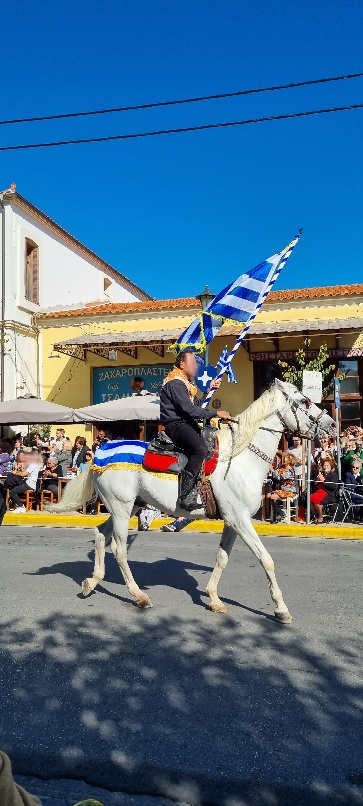
Finally, on the 11th November 1912, the island of Chios was liberated and reunited with the newly built Greek State.
So, here we are, 110 years later, celebrating this important date. Of course, the other volunteers and I didn’t want to miss the festivities in the city. Therefore, we took the taxi there and searched for a good spot to watch the big parade that takes place every year. We were on the main street, surrounded by hundreds of Chians. You could feel the national pride in every fiber of your body. The people were cheering, clapping, and presenting huge Greek flags to everyone. The whole city was decorated, and the parade was taking over two hours. Schools, dance-, sports-, and music clubs, scouts, policemen, and the military were taking part. Everybody dressed up, and people from all around Chios came together for this celebration. Also, they all wore their traditional clothing, representing the Greek culture that they can now proudly call their own.
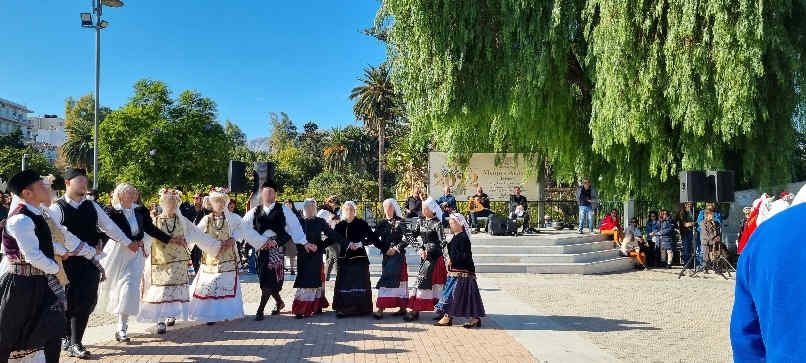
After the parade, everyone gathered at the main square, where a band was playing traditional music. All the dance groups that had marched past us earlier gathered there and started to perform their dances. It was fascinating to see so many people at once living up to their culture and performing their traditional dances. The whole city square was filled with life as everyone watched the spectacle. The restaurants were full of people, and whoever didn’t get a table just stood there and enjoyed cotton candy, popcorn, and more from one of the booths on the square.
After this eventful weekend, everyone returned to their daily lives. Always in memory of the past and what their ancestors had to go through. History is all around you, and if you keep your eyes open, you will see the past’s footprints everywhere. We should never forget to talk about history and be grateful for the present we have now. The celebration was a great part of it all, and we had a lot of fun participating and getting as much cultural impressions as possible.
sources:
https://www.greeka.com/eastern-aegean/chios/history/ (Greeka, 07.02.2023)
https://www.greeka.com/eastern-aegean/chios/sightseeing/chios-castle/ (Greeka, 07.02.2023)
https://www.kastra.eu/castleen.php?kastro=xios (Olga Vassi, 07.02.2023)
https://www.chioslife.gr/en/sightseeing/castle-chios (chioslife, 07.02.2023)
http://odysseus.culture.gr/h/2/eh251.jsp?obj_id=23405 (Olga Vassi, 07.02.2023)

